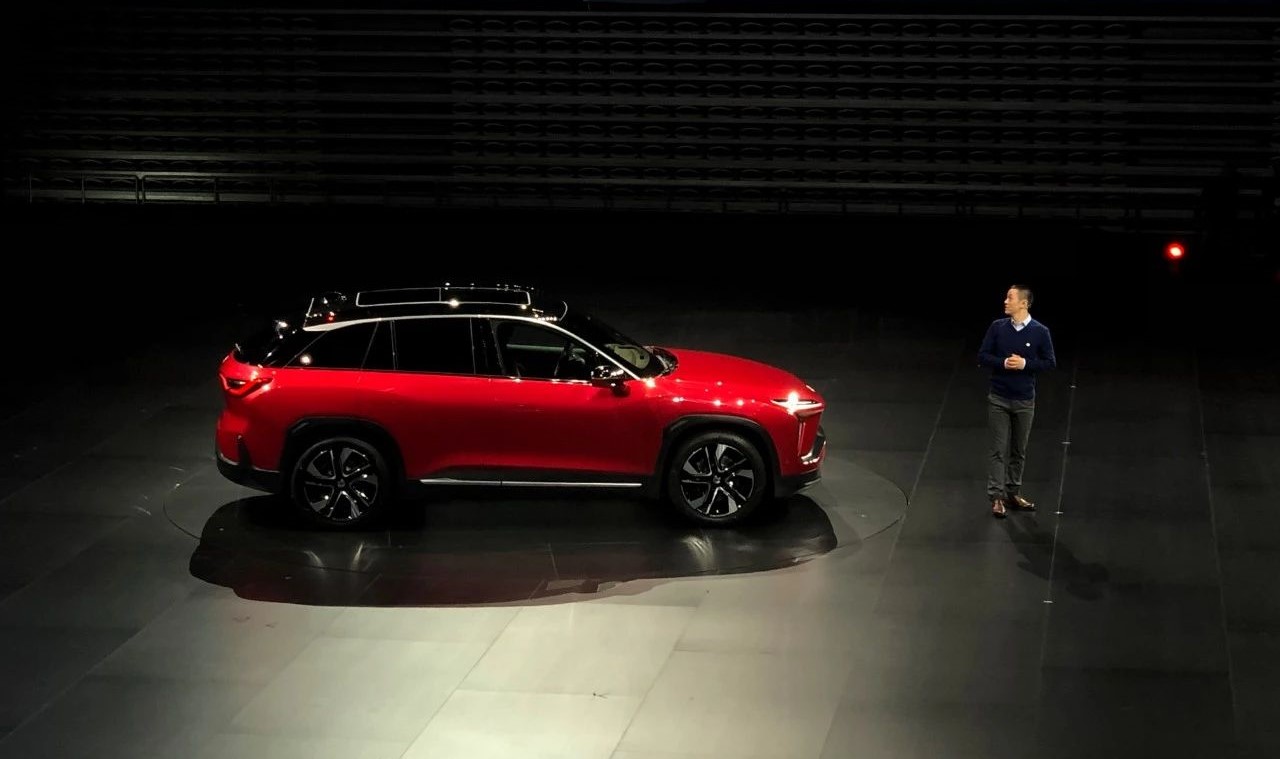From December 16, 2017 to December 15, 2018, from the Beijing Wukesong Arena to the Shanghai Oriental Sports Center, one year after the release of the NIO ES8, the NIO ES6 officially made its debut.
How important is the NIO ES6 to NIO? This probably leads to another question: how to establish a luxury car brand from scratch?
From LEXUS F1 racing to the Lexus LS and to more sedans and SUVs, from the Tesla Roadster to the Model S/X and now to the Model 3, this is a widely validated path for building a brand: “starting from high-end and constantly exploring downwards before innovating the business model for establishing a new brand.”
The difference is that Tesla, as radical as it is, took nine years from the Roadster to the Model 3, while NIO only took two years from the EP9 to the ES6.
From its inception, NIO has been a brand that attracts a large number of people with applause and faces questions and doubts. The ES6 is responsible for repelling skeptics and launching an attack into the more mainstream foreign luxury brand market segment for NIO.
Will it succeed? Don’t worry, let the bullets fly for a while.
NIO ES6
First, let’s talk about the product itself, and briefly discuss the exterior and interior design.
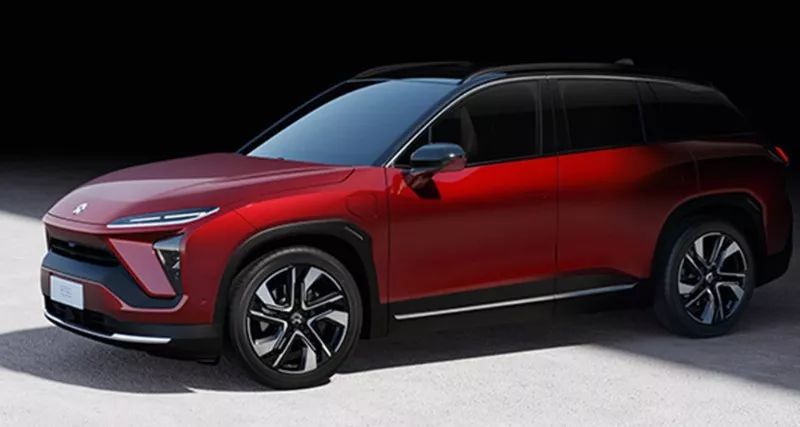
Although NIO ES6 has removed the iconic chrome strip on the X-Bar of the ES8’s front grille, the ES6 still has a very typical family design.
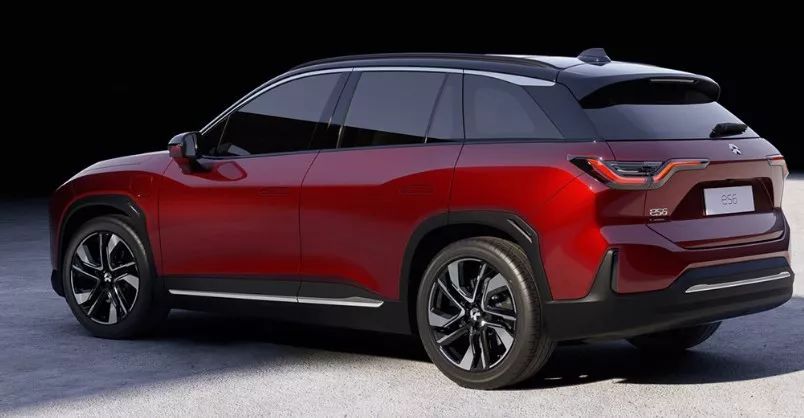
Frankly, while the front styling and angular lines of the ES8 are distinctive enough, it is more often a controversial and polarizing design. The front-end design of the ES6 reduces that aggressiveness and the lines on the bonnet and sides are smoother.
This is in line with the positioning of the two cars: the ES8 is responsible for establishing the brand, while the ES6 is to reach a wider audience in a friendlier manner.
Then there is the interior, mostly with adjustments to details, such as the more youthful three-spoke steering wheel.
Sport-style in-body seats.
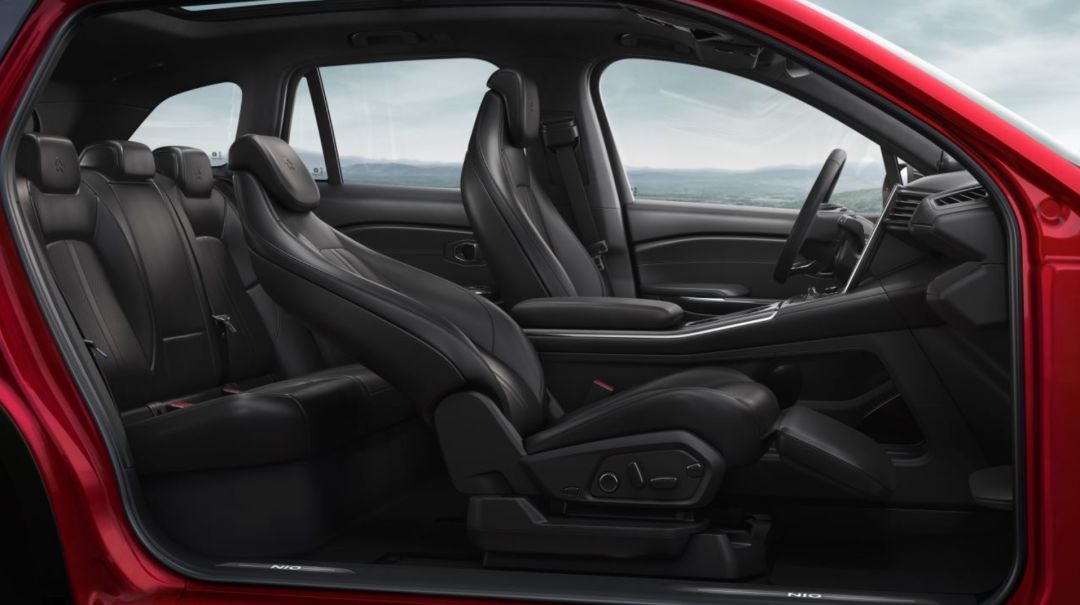 Compared with ES8, the 11.3-inch center control touch screen with narrower bezels and larger display, intelligent fragrance system, etc. are more appealing.
Compared with ES8, the 11.3-inch center control touch screen with narrower bezels and larger display, intelligent fragrance system, etc. are more appealing.
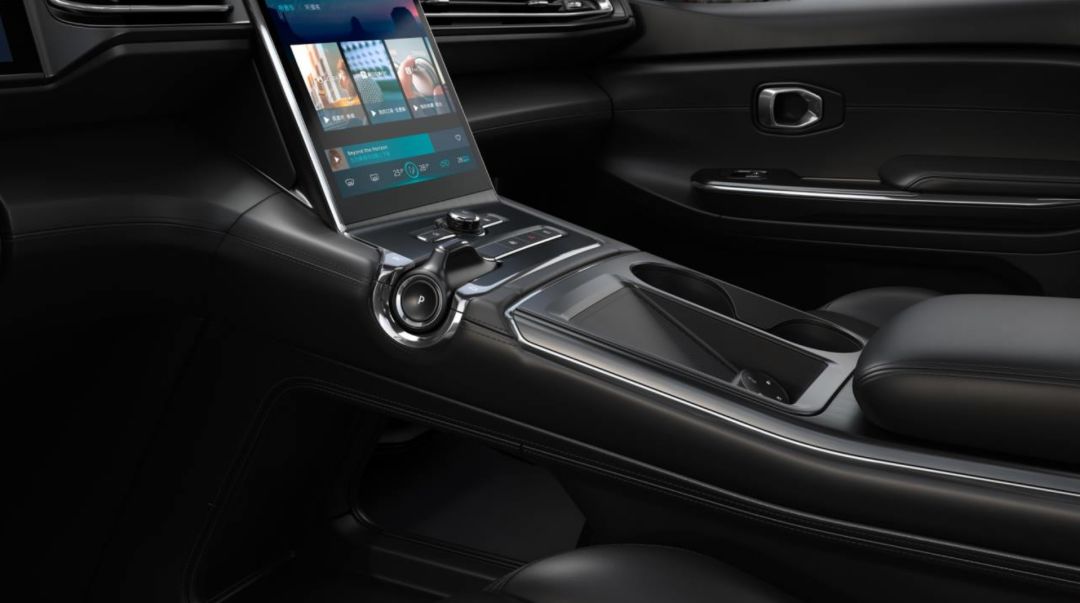
In short, if you like ES8, you may like ES6 even more; if you are not interested in ES8, you can take a look at ES6.
Now, the real question is: has ES6 solved the problems that ES8 has?
The biggest problem of ES8 is its driving range. With a 70 kWh battery dragging a 2.5-tonne car body and an average wind resistance and energy consumption control, the winter driving range of ES8 hovers around 200 km, which significantly affects all travel plans beyond daily commutes for a mid-to-large-sized SUV.
First, let’s compare the performance parameters of ES6 with those of electric SUVs of the same level in the next two years, and then talk about the improvements made on ES6.
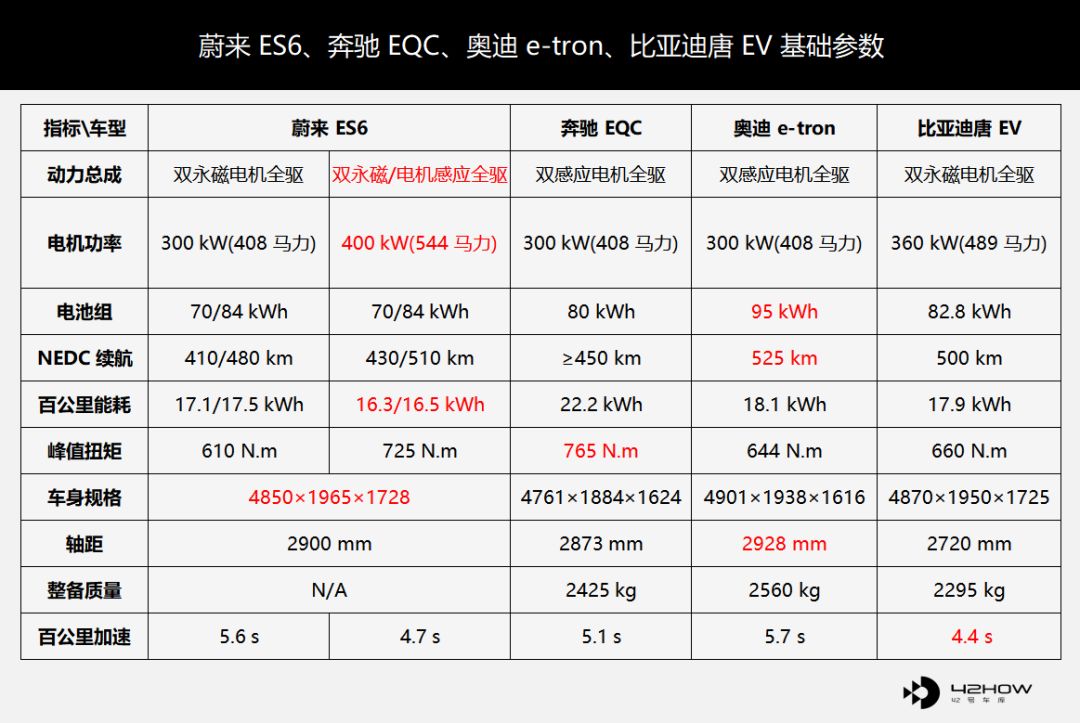
The first improvement is the upgrade of the battery pack to 84 kWh.
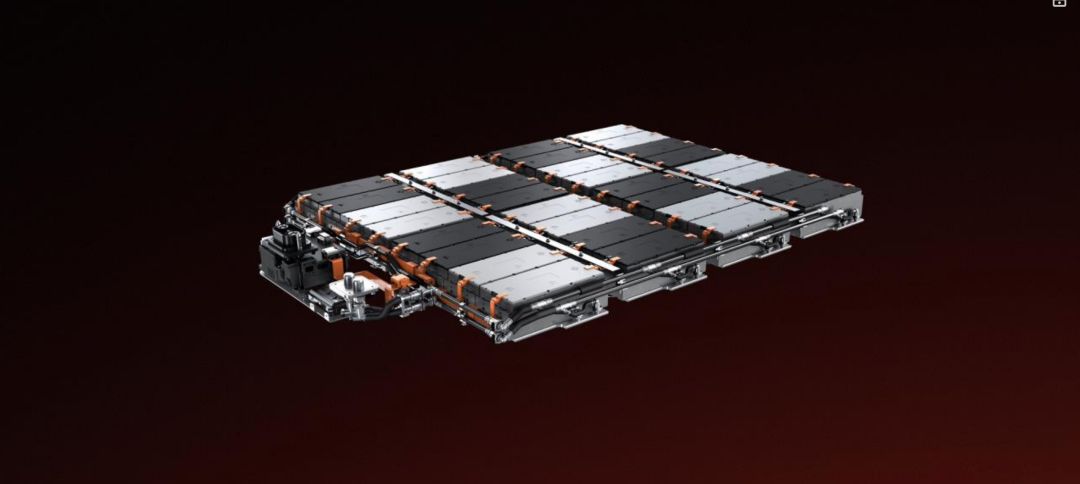
Even if it is launched in the middle of next year, the specification of the battery pack with 84 kWh is still among the best. Comparing with the most powerful electric SUV in the market, the Mercedes-Benz EQC has 80 kWh, the Audi e-tron has 95 kWh, the BYD Tang has 82.8 kWh, and the NIO ES6 has the industry-leading battery pack specification.
Driving range is influenced by many factors, and having a large battery pack does not necessarily guarantee long-range driving, but a small battery pack definitely limits driving range.
The second improvement is the adoption of dual permanent magnet/induction motors with all-wheel drive.
Dual-motor all-wheel drive is a guarantee for entering the 5-second hundred-kilometer acceleration club and is a common configuration for high-performance electric cars in the era of electric vehicles. However, the configuration of using a front permanent magnet motor and a rear induction motor is not common. Before NIO ES6, only Tesla Model 3’s dual-motor and high-performance versions have adopted the same technology.
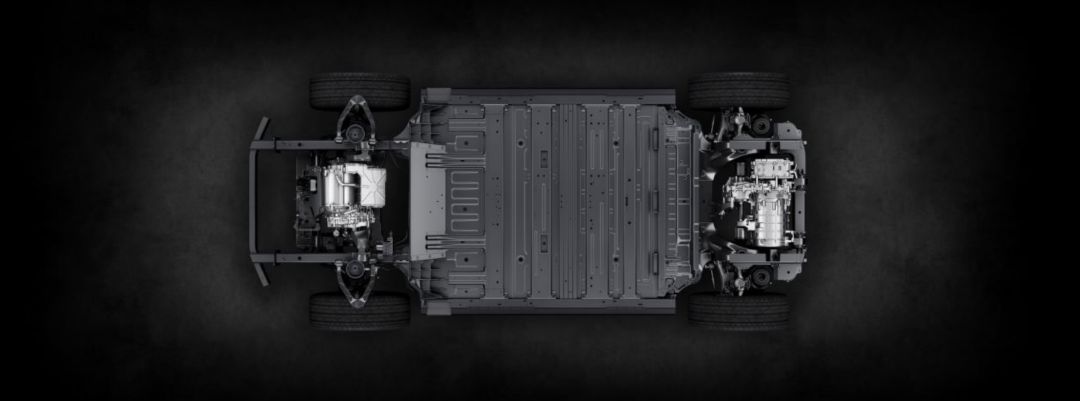 The analysis of advantages and disadvantages between permanent magnet motors and induction motors is complicated, and there is no absolute right or wrong choice between these two technical routes. However, from a broad perspective, permanent magnet motors are more energy-efficient (offering longer mileage), while induction motors offer high performance (with faster acceleration). The ES8 dual induction motors can achieve zero to 100 km/h acceleration in 4.4 seconds, but the regular commuting energy consumption often increases to about 28 kWh/100 km.
The analysis of advantages and disadvantages between permanent magnet motors and induction motors is complicated, and there is no absolute right or wrong choice between these two technical routes. However, from a broad perspective, permanent magnet motors are more energy-efficient (offering longer mileage), while induction motors offer high performance (with faster acceleration). The ES8 dual induction motors can achieve zero to 100 km/h acceleration in 4.4 seconds, but the regular commuting energy consumption often increases to about 28 kWh/100 km.
Therefore, the choice of permanent magnet motor first and induction motor later for the ES6 means economic energy consumption and fierce performance can be achieved, the best of both worlds.
Thirdly, vehicle specifications and energy consumption control.
There is not much to say about the vehicle specifications. The ES6 body is smaller, lighter in overall weight, and has lower energy consumption. It is worth mentioning that even in the lower-positioned ES6, NIO still uses a full aluminum body and an aluminum alloy-carbon fiber vehicle structure. For electric vehicles, a lighter body obviously reduces energy consumption.
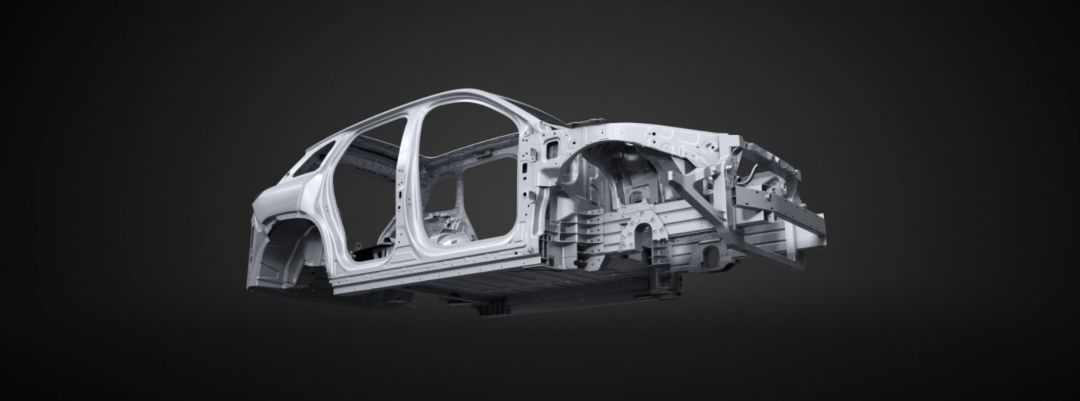
Lastly, energy consumption control. Compared to Tesla Model X, the ES8’s high-speed energy consumption performance is extremely poor. In terms of energy consumption control itself, has the ES6 improved? This question may have to wait until next year’s delivery to answer.
But the answer is not really important. With the power from the three aspects, the ES6’s NEDC range has reached 510 km. At least on the surface, the problem of the driving range has been solved.
The second issue is the stability of the software system.
This is another deadly bug that NIO cannot compete in. The day after the release of the ES8 last year, Li Bin proudly told the media that NIO was one of only two automakers in the world capable of independently developing six core technologies for intelligent electric vehicles: motors, electronic control (BMS), battery packs, gateways, advanced driving assistance (ADAS), and intelligent cabin systems.
Independent research and development can bring many advantages to the company, such as deeper understanding of how to improve products and technology by the research and development team, and a shorter iteration and improvement cycle than supplier solutions. The only problem is that it requires a lot of manpower, financial resources, and a very long period.
Therefore, this is a logically correct but difficult to implement task.
Tesla’s shift to self-developed Autopilot 2.0 once took a full year to catch up with Autopilot 1.0. Note that NIO Pilot, which is also a core technology capability, is established from scratch for automated assisted driving systems.
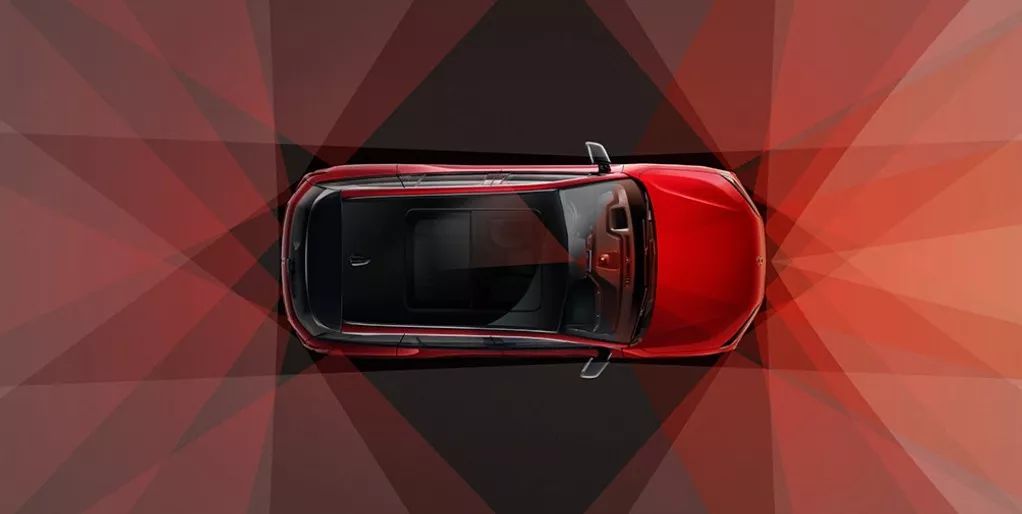 No surprise, NIO Pilot hardware is standard across the ES6 range, including the Mobileye EyeQ4 chip, three front-facing cameras, four surround cameras, five millimeter-wave radars, and twelve ultrasonic sensors.
No surprise, NIO Pilot hardware is standard across the ES6 range, including the Mobileye EyeQ4 chip, three front-facing cameras, four surround cameras, five millimeter-wave radars, and twelve ultrasonic sensors.
At today’s press conference, Li Bin awkwardly said, “NIO Pilot has been a long time coming.” Even more awkwardly, the company has not provided a timetable for the promised functionality of NIO Pilot which was promised a year ago.
Prior to this, NIO’s official position on the development of connected cars and autonomous driving was located in San Jose, Silicon Valley, led by NIO’s co-founder, chief development officer and North American CEO Padmasree Warrior. With Warrior’s departure, Ganesh V. Iyer, former chief information officer of Tesla, has been appointed general manager of NIO’s North American office.
Will NIO’s software system stability and feature richness be improved under the leadership of someone from Tesla? We’ll have to wait and see.
Finally, here are the prices:
- ES6 Standard Edition: 70 kWh battery model priced at RMB 358,000; 84 kWh battery model priced at RMB 408,000
- ES6 Performance Edition: 70 kWh battery model priced at RMB 398,000; 84 kWh battery model priced at RMB 448,000
Does NIO Have a Future?
Product comes first, but having a qualified product is far from enough.
For example, NIO advocates a “user-centered” philosophy, and its slogan regarding energy replenishment reads “charging is more convenient than refueling.” This statement has caused great controversy.
A profound question is: Where are the boundaries of the “user-centered” user experience?
Wang Huiwen, senior vice president of Meituan, gave a profound response when asked about the decline in user experience after Meituan’s acquisition of Mobike.
Enterprises engaged in pure internet business often have a big cognitive error, they think that user experience is the most important thing. But absolute experience comes at a cost, not just for a bike-sharing business, but for all businesses.
Internet companies that blindly pursue user experience thinking in their business will surely go bankrupt. Of course, we value user experience, but will seek reasonable user experience within the reasonable cost structure. Otherwise, if we go bankrupt, what can we do to guarantee user experience?
If you were asked to identify the commonalities between the early days of Mobike and the delivery of the NIO ES8, what would your answer be?
- Leading user experience in the industry
- Business model is unsustainable
- Continuous expansion of losses
- ……
Li Bin, the founder of NIO, is also an angel investor in Mobike and former chairman of Mobike.It is not an exaggeration to say that NIO’s attitude towards user experience and cost balance determines the future of NIO.
I was once confused about NIO, but it seems that NIO’s way of doing things is changing from recent planning and layout.
On Weibo, many car reviewers have expressed doubts about NIO’s “electricity is more convenient than refueling” statement and are preparing to test NIO Power’s energy supply system’s operation and maintenance capabilities.
Contrary to its past practice of taking measures such as preparing mobile charging cars and battery swapping stations at disproportionate costs to ensure user travel, NIO is now recommending users to use its gasoline-powered SUV of the same level to complete travel needs during extreme winter weather conditions via official Weibo posts.
However, this reply on Weibo may be a deliberate public relations jargon. Apart from the “solar flashlight” consisting of trucks, mobile charging cars, and NIO ES8, NIO’s deployment of the battery swapping station also faces criticism for being inefficient and high-cost, despite the limited space in Beijing, Shanghai, and Guangzhou.
Regarding the latest deployment approach for battery swapping stations, NIO has shifted from city-wide to highways.
Li Bin mentioned during the press conference that NIO’s ES8 user travel statistics showed that 95% of the travel was below 100km daily commuting, 4.6% of the travel mileage was higher than 100km, and only 0.4% of the travel requires rapid energy replenishment for long-distance travel.
So, highways are the real stage for the battery swapping station to display its strengths. On the one hand, operating costs will be reduced relative to first-tier cities, and more importantly, this is a high-frequency user demand.
Considering that the charging stations of the National Grid Corporation of China are of uneven quality and that Tesla’s Supercharger network has not even entered the national highway network, the NIO battery swapping station network is a precise blow by NIO against all pure electric SUVs in the same level that will be launched next year, including Tesla.
Unlike most people’s understanding of NIO being heavily marketing and service-oriented, NIO has never spared any effort in research and development since its inception. Judging from today’s press conference, this company is trying to return to commercial logic and compete with Tesla and BBA with a more rational attitude by providing the best possible products and services within a limited cost structure.
Will NIO’s future be good? One press conference is unlikely to give a fair answer. As the saying goes, “let the bullet fly for a while”.
ES6 is a good card, NIO, don’t ruin it.“`


“`
This article is a translation by ChatGPT of a Chinese report from 42HOW. If you have any questions about it, please email bd@42how.com.
